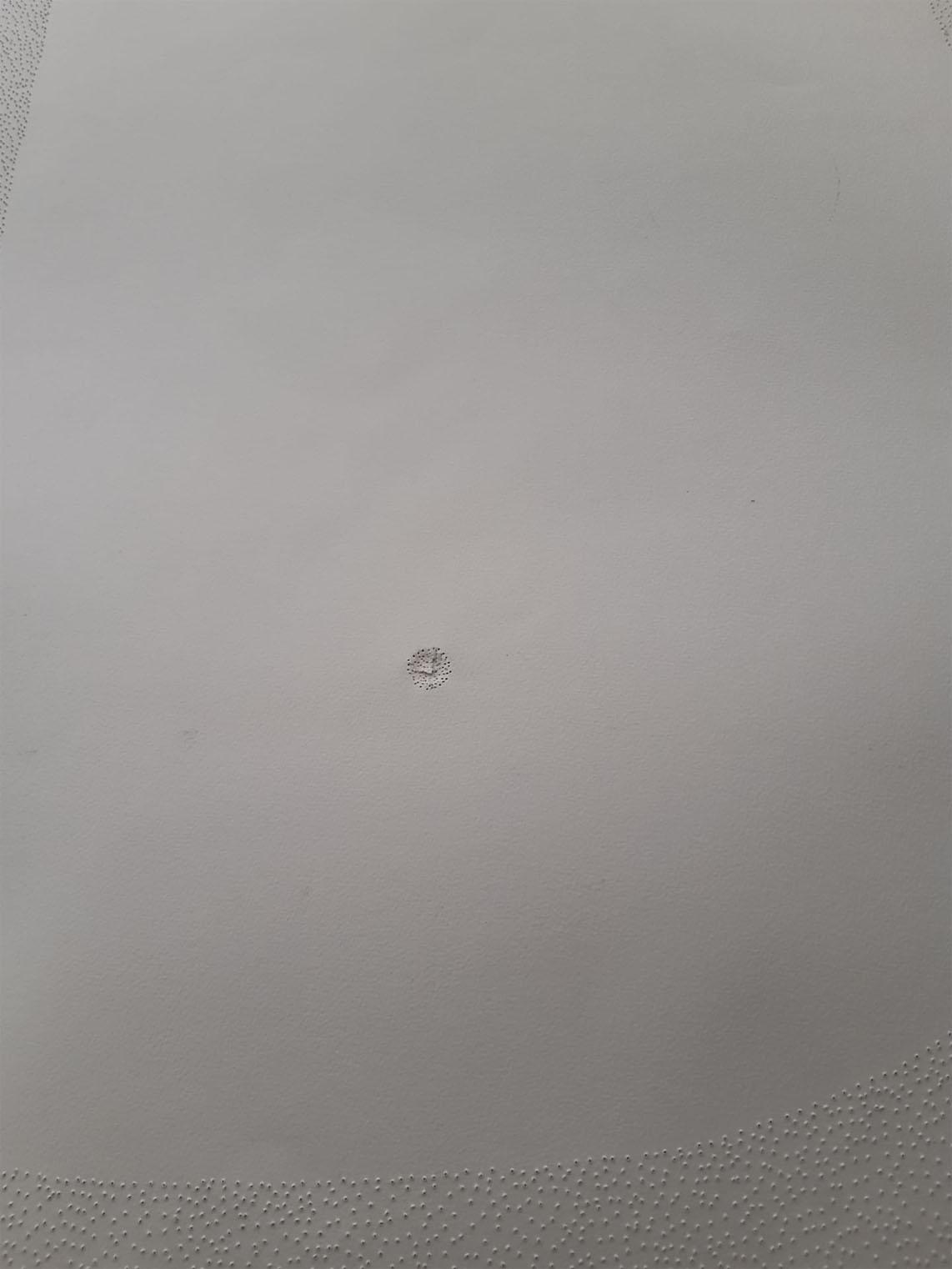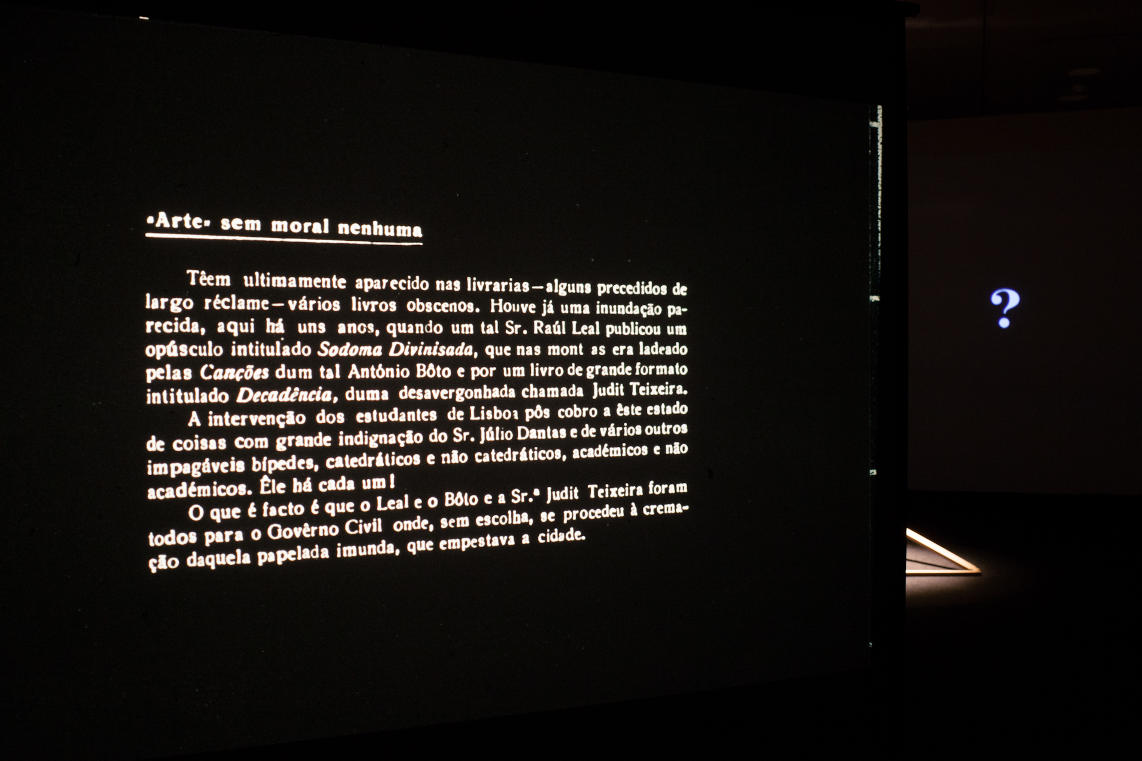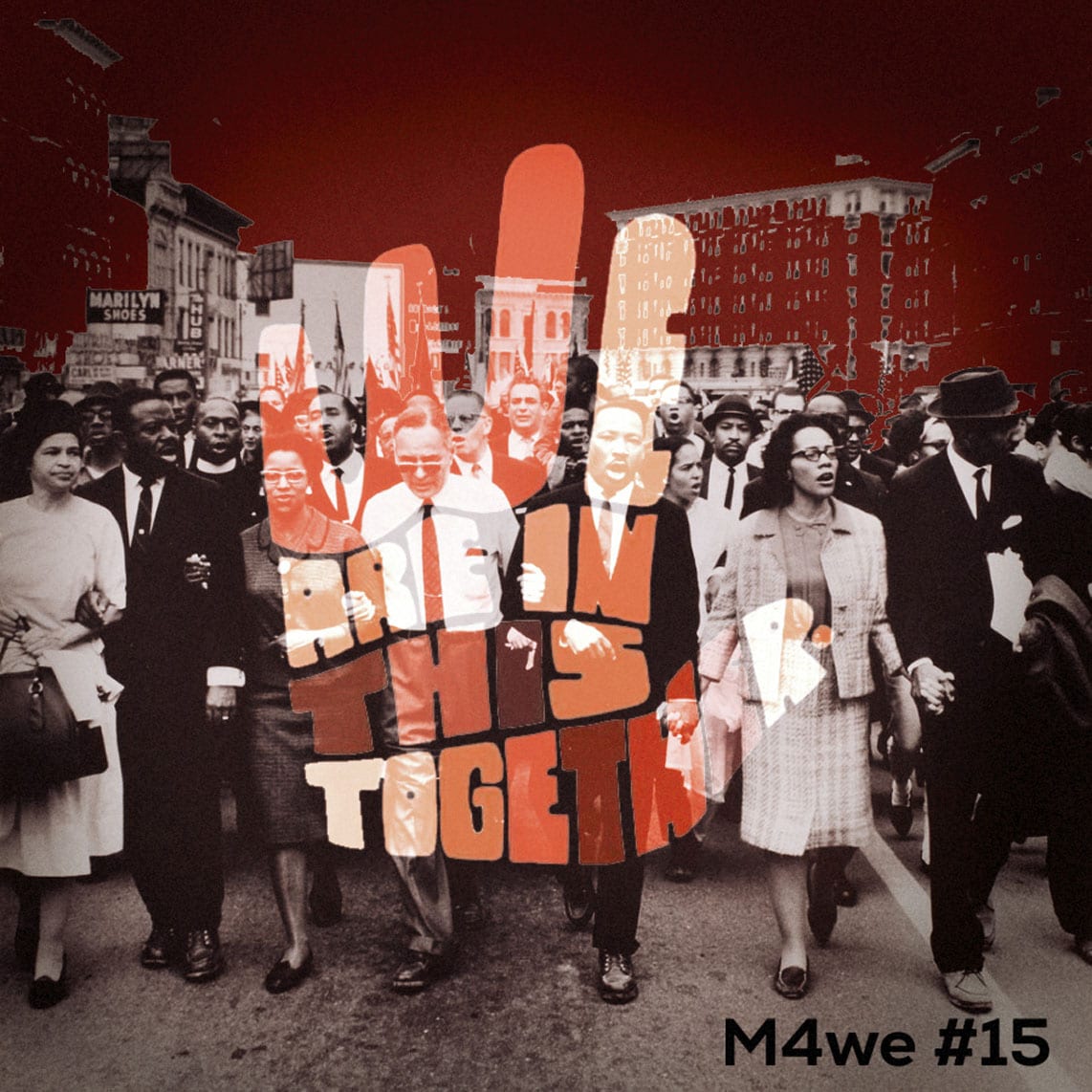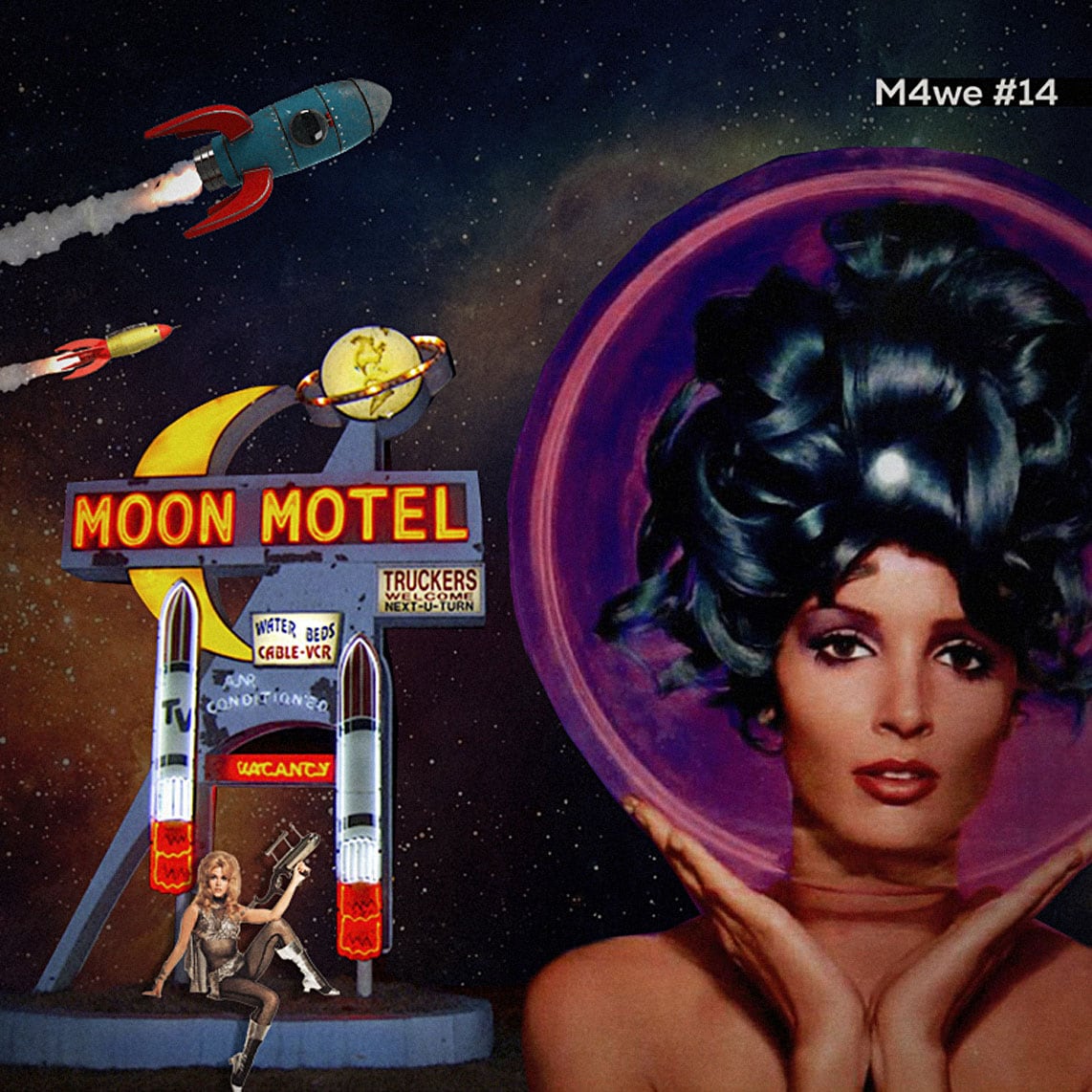—
(djuːˈɛt )
NOUN
1. Also called (esp for instrumental compositions): duo
a musical composition for two performers or voices
2. an action or activity performed by a pair of closely connected individuals
If one thing is good, why not two? This is not exactly the logic behind this week’s predominantly Anglo-Saxon choices, but we have to admit that two are always better than one. Hence my decision to approach some of the great duets I grew up with. Most of them are taken from the pop and r’n’b songbook with a few exceptions that will spice up this cooking with 40 ingredients. A selection that I consider to be excellent since the duet catalog is full of kitty stuff that continue to be heard incessantly everywhere. As so I was able to bypass the joint venture of Freddie Mercury and Montserrat Caballé (fantastic endeavour I admit but a tad corny) of several syrupy things by Kenny Rogers or the grunge “national anthem”, Hunger Strike which sounds like an inebriated duet by Chris Cornell with Eddie Vedder.
It takes two to tango. Idiomatic expression that suggests occurrences in which more than one person has to be involved and coordinated in an effort to face vicissitudes inherent to said situations. The origin of the phrase is in the song Takes Two to Tango, written and composed in 1952 by Al Hoffman and Dick Manning and popularised by Pearl Bailey, an American actress who 6 years after her debut on Broadway reached the top ten of the Billboard with this song (https://www.youtube.com/watch?v=lDd1S1TJdhY). It is worth seeing this appearance on Nat King Cole’s show even if it’s just as proof that Americans may think that Tango comes from Spain and not from Argentina but also to hear Miss Bailey singing the original interpretation since I don’t have a copy of it. The version I leave here opposes Betty Carter to Ray Charles and thus serves as a segway for another great hit by Mr. Ray, Hit the Road Jack, despite never being credited as being a duet with the The Raelettes singer, Margie Hendricks.
I go through classical music, in this case by Gioachino Antonio Rossini, who was a true ninja of the re-edit, in his compositions he freely plagiarised his own works, which in any case was common practice among opera composers of that time when subjected to pressure from deadlines. However, it is very likely that “Duetto buffo di due gatti”, presented here in the meows of Kiri Te Kanawa and Norma Burrows, was not written by the Italian but “composed” by G. Berthold, pseudonym Robert Lucas Pearsall, who in 1825 decided to agglomerate pieces of Rossini’s compositions and create this purrfect Whiskas overdose.
I go through non-voice duets, like when Herbie Hancock and Chick Corea were playing together and I also go over certain radio and television programs where some partnerships were signed without a contract. From the radio era The Doris Day Show, broadcast between March 1952 and May 1953, while from the television arquives I use two: This is Tom Jones, a 65-episode ATV program that ran on British television between 1969 and 1971, in one of them a meeting took place between him and Janis Joplin which is amazing and Live on The Cher Show, which comes from a long line of TV programs on CBS that Cher had from 1971 onwards. It broke records with the sheer amount of fan mail received, a major sign of it’s popularity. From this program I bring you a number where the ex-mrs. Bono duets with Tina “the best legs of the showbiz” Turner, performing Shame, Shame, Shame, Shirley Goodman’s disco-sound hit from whom I present just before the great Let The Good Times Roll premiered twenty years earlier when she was part of the Shirley & Lee duo. I just drop in on Japanese Sandman by The Andrew Sisters, who were by far the most popular vocal ensemble of the past century. Contralto LaVerne Sophie, soprano Maxene Angelyn and mezzo-soprano Patricia Marie were three daughters of the marriage of Greek immigrant Peter Andreus to the Norwegian-American Olga Sollie. The sisters recorded about 600 songs that sold nearly 100 million copies. In total there were 113 songs on the American charts of which 46 reached at least the top 10, that is to say more than Elvis or the Beatles. It seems that maybe it’s even possible to dance the tango as a threesome…
And this number 3 got me thinking about three songs that made me sad for not being included in this week’s list and that are all too long by the canons of what must be a hit worthy of the top spots of a sales chart: Donna Summer with Barbra Streisand in No More Tears (Enough Is Enough) (11’44 ”), Peter Gabriel with Kate Bush in Don’t Give Up (6’07 ”) and the Righteous Brothers in You’ve Lost That Lovin ‘Feelin’ (3’30 ”). The first was in 1979 the 4th top 1 of both singers, who never sang it live together. The second was to be initially a duet with Dolly Parton but when she declined Gabriel’s invitation, to act in a story that details the emotional downward spiral of a man who has a woman on his side encouraging him to move on, the former Genesis singer decided to call Bush. The third, written by Phil Spector with Barry Mann and Cynthia Weill, two great “artisans” of the Brill Building, may not seem very long by today’s standards (the version that the Human League recorded on their first 1979 album Reproduction measured three times more) but in 1964 it was longer than the usual pop hits on AM radio. But the interplay of Bill Medley’s vocal in the bass parts with Bobby Hatfield in the highs along with the author’s already famous wall of sound and this song came to prove at number 1 that there could be another pop in the trenches of the war against the “British invasion”.
On the way to the final stretch I pass through an area that I could call “unlikely duets”. I start with Is It All Over My Face by Loose Joints which has a male version (Arthur Russel’s favorite) and a female version re-authored at the time by Larry Levan with a little help from Francois Kevorkian. Bostonian Kon recently decided to make the inevitable, an excellent Duet Mix. Then I move on to another mashup, by master Mark Vidler who signs with his Go Home Productions’ alter ego, Mick ‘N’ Carly does exactly what is written on the package, mixes Some Girls from the Rolling Stones with You’re so Vain by Carly Simon. Truth be told, this is not exactly an improbable duet, Jagger is on the backing vocals of Simon’s song and supposedly they even recorded the duet Fragile that was lost, which apparently has already been found and in which perhaps nobody is interested… What comes next has a really unlikely quality to it and I hope everyone knows this because it’s brilliant. Medo-Dueto (Im)Possível Com Amália Rodrigues is an end stop like few others. Last track on the 2013 album Amália by Júlio Resende it has no place here for descriptions (this is me winking at my friend Gimba who thinks I wrote too little last week). Just go and listen.
I end up in beauty with a double scoop of Some Velvet Morning, a song written in 1967 by the psychedelic cowboy Lee Hazlewood for the album Moving with Nancy, the soundtrack of a television program that Sinatra’s daughter had at the time (could it be that at that time everyone was entitled to make television programs?). This song has a very particular characteristic: the rhythm of the parts sung by Lee is 4/4 while the moments reserved for Nancy are ternary. The source of lyrical inspiration is in Greek mythology more concretely in Phaedra, Cretan royalty, wife of Theseus and half-sister of the Minotaur. In 2003, The Daily Telegraph considered it “one of the strangest, most drastic and sexually obscure songs ever written – ambitious, beautiful and unforgettable”. That same year, the Primal Scream invited Kate Moss to revisit it, but personally I find that version very poor. This song has so many adaptations that I might as well have chosen the version of Rowland S. Howard with Lydia Lunch or that of Vanilla Fudge, but none really adds anything new to the original composition. If I had used the instrumental version recorded by Gábor Szabó on his album Bacchanal from 1968 I would have been at least on the right track but I ended up including the author’s version. But then I remembered that in his swan song Lee had revisited this topic again. In Cake or Death, his last album dated of 2006, Lee decides to let his granddaughter, Phaedra, sing a verse and for that reason and just after the original I leave here the result of this dialogue (by a pair of closely connected individuals) to end this M4we.
In these times of social distancing save this weekend to think of ways to dance close together.
—
#staysafe #musicfortheweekend
—
Ella Fitzgerald – Dream a Little Dream of Me (feat. Louis Armstrong)
Minnie Riperton – Take a Little Trip (duet with Stevie Wonder)
Roberta Flack & Donny Hathaway – Where Is The Love
Edith Piaf avec Théo Sarapo – A Quoi Ça Sert L’Amour?
Tom Waits and Crystal Gayle – This One’s From The Heart
David Byrne & St. Vincent – Who
Marvin Gaye & Tammi Terrell – Ain’t No Mountain High Enough (Ben Human Remix)
Queen with David Bowie – Under Pressure
Frank and Nancy Sinatra – Somethin’ Stupid
Chick Corea And Herbie Hancock – Ostinato
Kiri Te Kanawa & Norma Burrows – Duetto buffo di due gatti
Michael Jackson – The Girl Is Mine ft. Paul McCartney
Sammy Davis Jr. & Dean Martin – Sam’s Song
António Calvário & Madalena Iglésias – É tão bom amar
Inez & Charlie Foxx – Mockingbird
Sonny & Cher – I Got You Babe
Youssou N’Dour – 7 Seconds ft. Neneh Cherry
Hall & Oates – Alone Too Long
The Andrew Sisters – Japanese Sandman
Kandace Springs – Angel Eyes (feat. Norah Jones)
Duo Ouro Negro – Tala on n’bundo
Womack & Womack – Teardrops (Extended Remix)
Shirley & Lee – Let The Good Times Roll
Cher & Tina Turner – Shame, Shame, Shame
John Mellencamp and Me’Shell Ndegeocello – Wild Night
Elton John – Don’t Go Breaking My Heart (with Kiki Dee)
Serge Gainsbourg et Brigitte Bardot – Bonnie & Clyde (Herbert’s Fred & Ginger Mix)
Whitney Houston & George Michael – If I Told You That
Ray Charles & Betty Carter – Takes Two to Tango
Ray Charles with Margie Hendricks and The Raelettes – Hit The Road Jack
Otis Redding & Carla Thomas – Tramp
Tom Jones & Janis Joplin – Raise Your Hand
Doris Day – Life Will Be Peaches & Cream with Tony Martin
Louis Prima & Keely Smith – That Old Black Magic
Mickey & Sylvia – Love Is Strange
Loose Joints – Is It All Over My Face (Kon’s Duet Mix)
Go Home Productions – Mick ‘N’ Carly
Júlio Resende – Medo-Dueto (Im)Possível com Amália Rodrigues
Nancy Sinatra & Lee Hazlewood – Some Velvet Morning
Phaedra & Grandpa Lee Hazlewood – Some Velvet Morning





